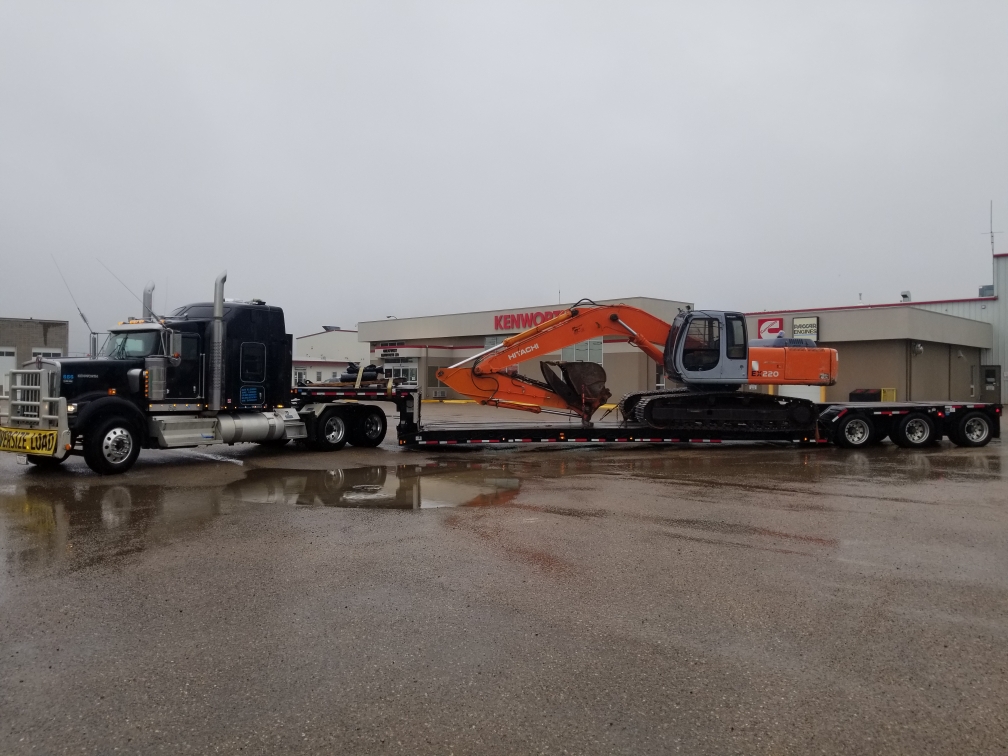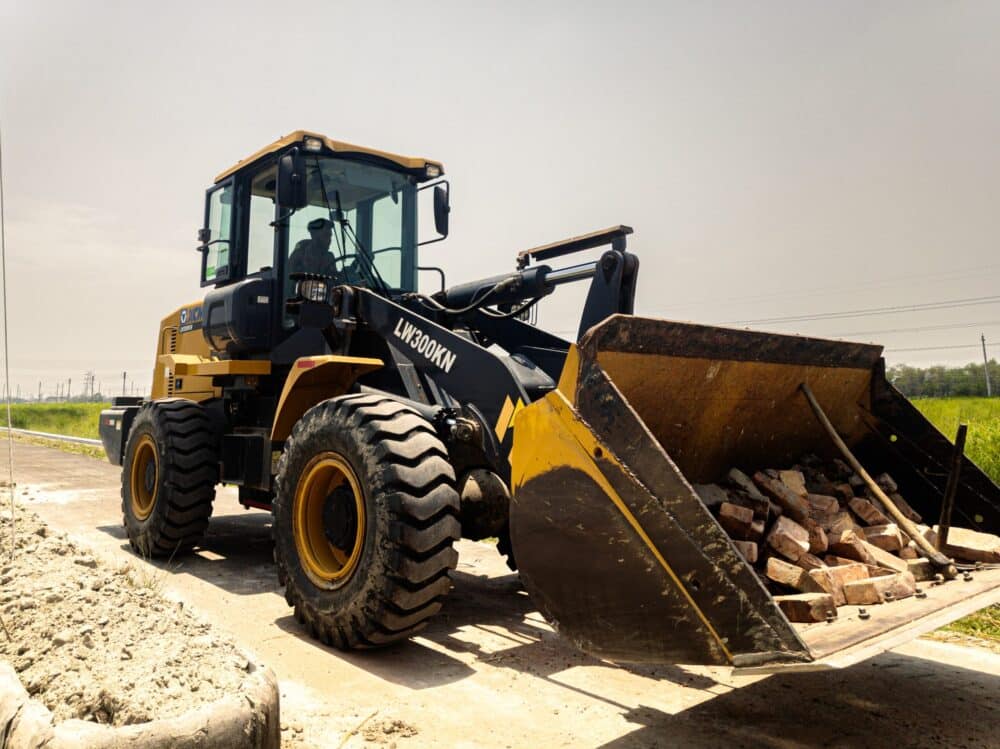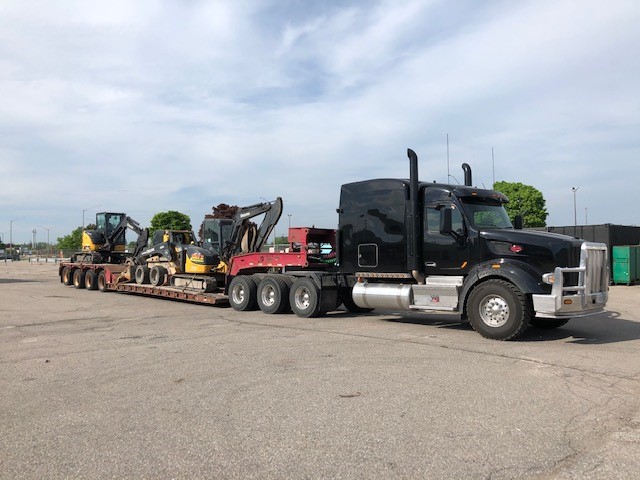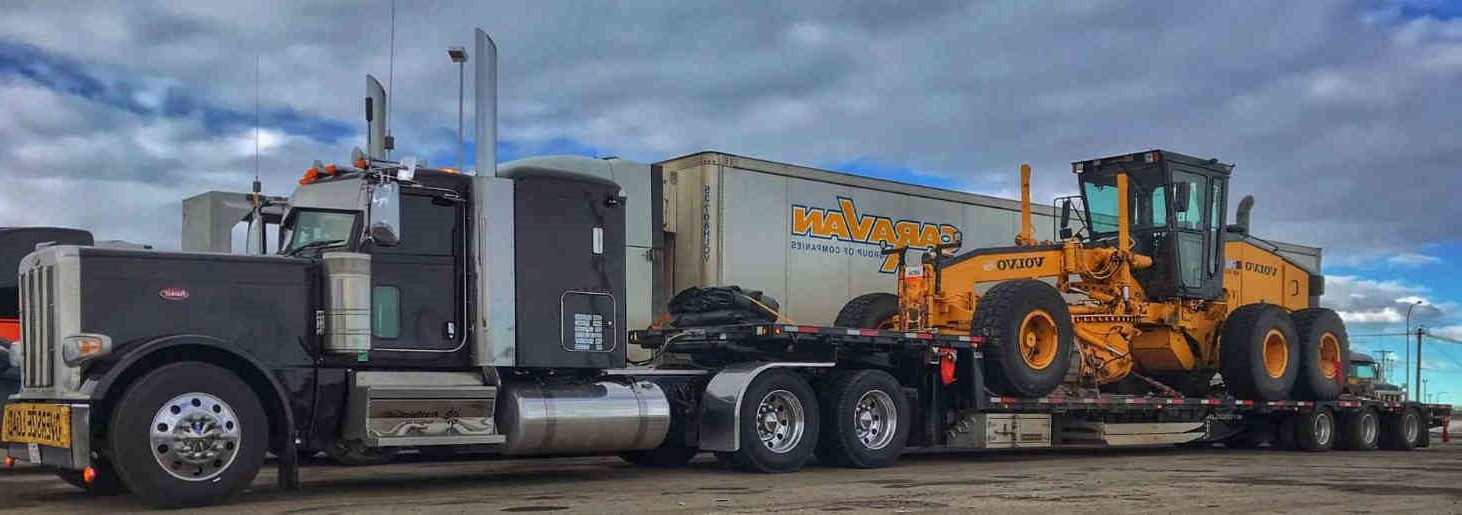Article summary:
What is long-haul transport, and why do you need to know about it? When you’re shipping heavy equipment for construction, you’re likely to deal with a long-haul shipment sooner rather than later, and there are some things to know to get you started. To ease the learning process, we’ll go over the basics of long-haul transport and construction equipment shipping. We’ll detail the requirements of long-haul, the basis of safe construction equipment hauling, the benefits and challenges of long-haul transport, and more. You’ll be ready to get started organizing your own long-haul loads!
Inside this article:
- What is considered long-haul transport?
- When would you need a long haul?
- Challenges of long-haul trucking
- Benefits of using a load board for long-haul transport needs
- Tips to safely transport construction equipment
How to Safely Transport Construction Equipment Over Long Distances
Long-haul shipments are quite the feat! Heavy loads such as excavators, tractors, bulldozers, and more get transported hundreds or even thousands of kilometres from their pick-up point. That’s a big job. It’s a larger commitment than short-haul, which, as the name suggests, is a shipment over a short distance, typically less than 500 kilometres.
When you’re sending a load over a long distance, it’s important to work with a reliable heavy-haul shipping company. Shipping heavy loads over long distances require lots of experience and focus.
What Is Considered Long-Haul Transport?
Long-haul shipments traverse long distances and are typically defined as loads that need more than a day of transport. Though simple by definition, long-haul transport is not so simple to organize. Everything needs to be timed very well so that the load arrives at its destination on schedule, which means more pre-planning is required. Along with the typical arrangements, you also need to plan for the driver to rest and eat. If you’re transporting an oversized load, it is also necessary to arrange for permits and potentially schedule your travel within the restricted times.
With all the extra planning involved in a long-haul shipment, it is so important to work with an experienced and highly professional transport company in order to make to process straightforward.
Working With Professional Heavy-Haul Transport Companies
How do you make sure the company you’re working with is reliable? Here are our top tips.
Professional Drivers
The drivers that a company works with must demonstrate excellence in order to reliably carry out difficult long-haul jobs. Double-check whether or not the company vets their drivers, view any photos or videos of the drivers in action, and read some reviews.
Excellent Customer Service
The way a company interacts with potential customers says a lot about how they conduct their business overall. If you feel put off after a conversation with someone at the company, you might want to listen to your gut. A company with excellent customer service is easy to contact and provides fast and helpful responses.
A Transparent and Straightforward Process:
Yes, getting a heavy-haul load shipped is a multi-step process, but it shouldn’t be overwhelmingly complicated. You should be able to see every step of the process with full transparency from the company you’re working with, and it should be understandable. If the steps are unclear or hidden from you, you might want to think again about working with that particular company.
When Is a Long Haul Necessary?
It depends on the job, and there are no specific rules qualifying certain job types as long haul, but the jobs that usually require long-haul transport are cross-border trips and far-away auction purchases.
Crossing the border almost always adds time to jobs. Even if the travel distance is short, there’s a chance of the load becoming a long-haul shipment due to the extra time needed to cross the border. The truck must stop at the border and wait in line to cross. They will need to talk to an agent who will ask about the details of their travel and shipment. The correct documents need to be ready, or the truck could be pulled aside for inspection, which will take even more time.
Far-away auction purchases might mean you bought something from an auction in the southern United States or Eastern Canada when you’re from the West or anywhere in Canada when you’re from the Southern States. Traversing this distance typically requires more than a day of transport and can cover distances of over 500 kilometres.
A short haul might also turn into a long haul if unexpected challenges arise, such as heavy traffic or vehicle breakdowns. It is important for drivers to be prepared and able to respond logically to any situation on the road.
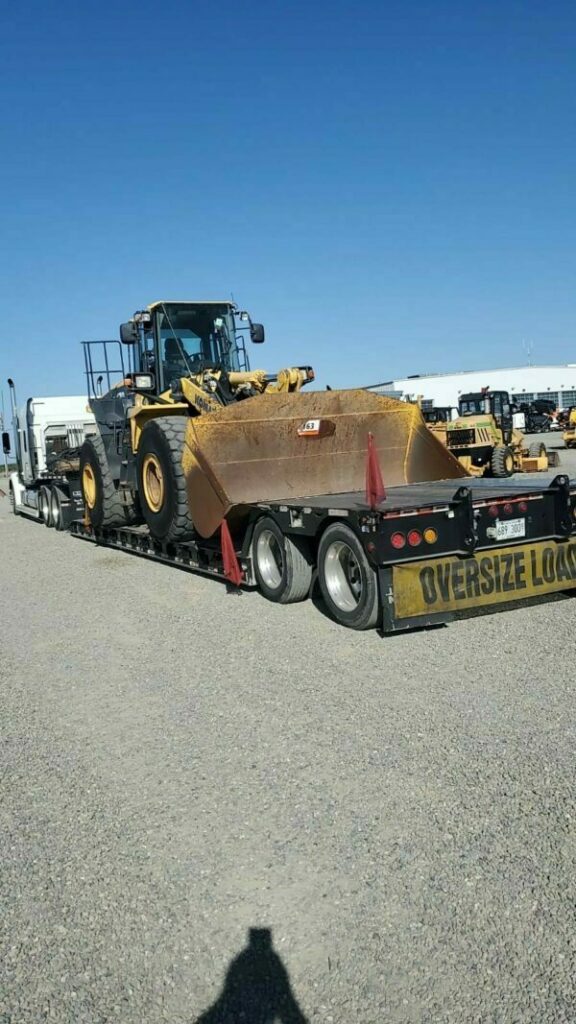
Challenges of Long-Haul Trucking
Long-haul trucking, as we’ve mentioned, is not without its challenges. However, an excellent heavy equipment transport company is able to respond to challenges aptly and makes the journey worth it when the equipment is safely delivered.
Increased Transport Time
One of the largest challenges of long-haul shipments is the increased transport time. The increased time required for the job can hurt the driver’s wallet, the customer’s, and the company’s. To avoid too harsh of an impact, planning out the shipment properly ahead of time is necessary.
Proper planning includes laying out the travel route and adjusting it as needed. Ask questions while planning in order to create the most efficient route. Where is the traffic the heaviest? Where are rest stops located? If it is an oversized load, where is the truck allowed to drive? The route also needs to be well-timed. If weather conditions are poor, for example, adjustments may need to be made. If the travel schedule overlaps with days of high-volume traffic, it might be worth rescheduling the load.
Increased Fuel Costs
With increased distance to travel and more time on the road, fuel usage goes up, and with it, the cost. Unfortunately, there is not much that can be done about the price of fuel. Reducing the negative impact of fuel costs once again comes down to careful route planning. Avoiding high-volume traffic, for example, not only saves time but saves fuel too. A skilled driver will also be able to increase fuel efficiency while driving with little things such as relaxed acceleration, management of cruising speeds, and monitoring of tire pressures.
Restrictions on Driving Hours
Long-haul jobs cover a lot of ground, but they cannot be driven all in one go. In order to keep the roads safe, there are restrictions in place to prevent truck drivers from driving past exhaustion. There are maximum numbers of hours that they can drive in specific periods, and that will affect the timeline of long-haul shipments. Here are some of the hours of service rules in Canada:
- There is a maximum of 13 hours of driving each day.
- There cannot be any driving after 14 hours on duty in a day.
- Drivers must take a minimum of 10 hours off each day.
- There cannot be any driving after 70 hours on duty in 7 days.
OR
- There cannot be any driving after 120 hours on duty in 14 days.
The hours of service rules must be followed, so solutions to maximize the efficiency of the load will involve adequate planning. If the route is well planned before loading day, you should have a rough estimate of the amount of time it will take and can then figure out when the driver will need to take breaks and when the driver will hit their maximums.
Crossing Multiple Regions
Long-haul shipments will cross multiple regions—multiple cities, multiple provinces, and possible borders. You need to know what permits the load needs ahead of time and figure out where rules differ across regions. Different permits are required to drive in different areas, so once again, the route must be carefully planned. Research each province and their regulations, and regularly consult with your driver to make sure everything is on track.
Benefits of Using a Load Board for Long-Haul Transport Needs
Using a load board makes organizing a long-haul shipment significantly easier. First, you’ll always get matched with an excellent driver because the only drivers added to the load board are those that are experienced and professional owner-operators. You’ll be matched with a driver that is best suited to haul your equipment. Drivers can look at loads that are posted and evaluate their own abilities to haul them based on time commitments, machine dimensions, and the trailer required (which is why we recommend including photos in your board posting). Once a driver well-suited to transporting your load finds your posting and accepts it, you can get started on the process.
With a load board, you’ll always receive fair prices. Quotes are calculated based on the distance covered and accurate dimensions of the load. There are no messy company fees involved. Experienced drivers may offer an all-in price for you on big jobs, where they will include the extra costs like permit and pilot car costs in their overall price.
If you feel at all confused, stressed, or curious, you can receive customer support from a real person (not a broker!) as needed. At Trusted Dispatch, we are more than happy to help you out via phone, email, or online chat.
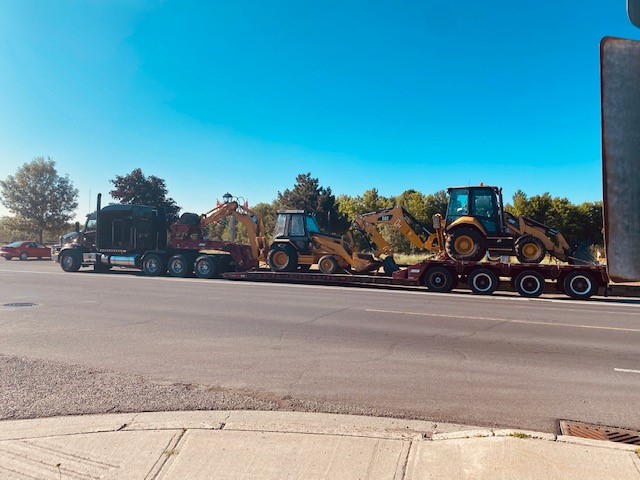
Tips to Safely Transport Construction Equipment
When shipping construction equipment, safety is always a top priority, regardless of what you are shipping. With construction equipment, there is a great deal of variety in machine types and manufacturers.
Construction equipment comes in countless varieties, such as:
- Dozers
- Excavators
- Backhoes
- Compactors
- Dump Trucks
- Graders
Even more, variety comes with different manufacturers:
- John Deere
- Volvo
- Caterpillar
- Komatsu
- Hitachi
Despite this variety, there are some general tips to follow to keep your construction equipment transportation safe. Your driver will be able to guide you, but there are some things you can do to help prepare for safe shipping.
Clean the Equipment
Make sure the equipment is clean so that all points of securement are easily accessible and undamaged. Cleaning will expose any pre-existing damages, and it will also give you an opportunity to remove any personal belongings from the equipment.
Park Carefully
Park the equipment on flat ground. When loading day comes, the equipment will need to be loaded in a flat, open area that provides adequate space for the truck, trailer, and equipment and is plat to prevent tupping and rocking.
Safety Checks
Another important step in preparing for transport is covering the windshield of the equipment to reduce the likelihood of damage during transport. And if it is damaged, broken glass won’t go all over the roads. Brakes should be double-checked just in case, and doors need to be locked to prevent them from accidentally opening at the wrong time. The vehicle should also be started ahead of time to make sure it can start reliably for loading day.
Load Securement
The load must be properly secured, and there are several requirements by law that must be followed for safe tie-downs. The right securements must be used. Those could be simple straps or heavy chains, depending on the load being shipped. There is also a minimum number of tie-down points required for different shipments. Before driving away, the securements must be tested to ensure that nothing has been missed. These steps are absolutely vital, as the consequences of skipping them could be severe.
Construction Equipment Hauling in Canada and the United States
For reliable long-haul construction equipment transport in Canada and the United States, use Trusted Dispatch. We have a transparent and straightforward process that our customers swear by. We have customer support available via email, phone, and online chat, and we respond to every message!
The drivers on our load board are fully vetted to ensure that they are highly experienced and professional, so when you find heavy equipment transport through Trusted Dispatch, you’ll always be matched with a driver that you can trust. Our load board allows for easy posting of loads and quick communication to drivers, as well as fair prices.
Ready to get your construction equipment on the road? Get started with your free quote today.

